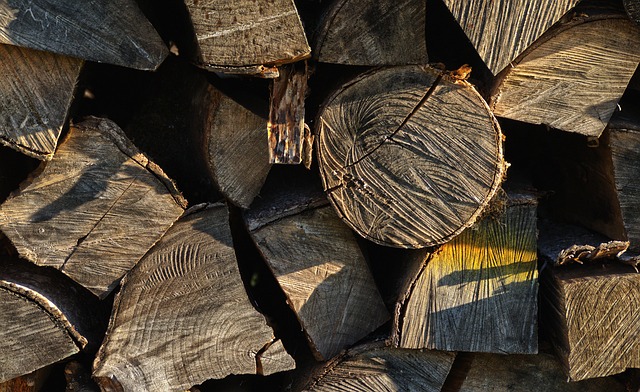Firewood is a valuable resource, especially for those who rely on wood-burning stoves or fireplaces to keep their homes warm during the colder months. Properly seasoned and stored firewood can make a significant difference in the efficiency and comfort of your heating system. However, many people wonder how long they can store firewood outside before it becomes unusable or deteriorates in quality. In this comprehensive guide, we will explore the various factors that affect the longevity of outdoor firewood storage and provide valuable tips on how to keep your firewood in optimal condition.
Understanding the Importance of Proper Firewood Storage
Before delving into the specific factors that determine how long firewood can be stored outside, it’s essential to understand why proper storage is crucial.
1. Firewood Quality
The quality of your firewood directly affects its burning efficiency and heat output. Well-seasoned firewood with low moisture content burns more cleanly and efficiently than freshly cut or green wood. Proper storage plays a vital role in the seasoning process, ensuring that your firewood is ready for use when you need it.
2. Preventing Rot and Decay
When firewood is exposed to the elements for extended periods, it can begin to decay and rot. Rotting wood not only becomes less effective as a fuel source but also harbors insects and fungi that can compromise your indoor air quality and create safety hazards. Proper storage helps mitigate these risks.
3. Maximizing Heat Output
To keep your home warm during the winter, you need firewood that burns at its maximum potential. Storing wood outside for too long can reduce its heat output, leaving you with a less efficient heating system. Learning how to store firewood properly ensures that you get the most heat from your logs.
Factors That Affect the Longevity of Outdoor Firewood Storage
Several factors influence how long you can store firewood outside while maintaining its quality. Understanding these factors will help you make informed decisions about your firewood storage practices.
1. Wood Species
Different wood species have varying densities and moisture content, which can impact their longevity when stored outdoors. Hardwoods like oak and maple tend to last longer than softwoods like pine or spruce. The denser the wood, the more resistant it is to decay.
2. Moisture Content
The moisture content of your firewood is a critical factor in how long it can be stored outside. Freshly cut or green wood contains a high moisture content, making it prone to decay and difficult to ignite. Proper seasoning, which involves drying the wood to a moisture content of around 20% or less, significantly extends its outdoor storage life.
3. Stack and Cover
How you stack and cover your firewood can make a big difference in its longevity. Firewood should be stacked in a way that allows for good airflow to promote drying and reduce moisture buildup. Covering the top of the stack with a waterproof tarp or roof protects the wood from rain and snow, preventing excessive moisture absorption.
4. Elevation and Drainage
The location where you store your firewood matters. Elevating the woodpile off the ground using pallets or logs prevents ground moisture from seeping into the wood. Additionally, ensure that your storage area has proper drainage to prevent water accumulation around the woodpile.
5. Exposure to Sunlight
Sunlight can help dry out firewood by evaporating moisture, but excessive exposure can also lead to drying and cracking. A balance is needed. Firewood stacks should receive some sunlight but should not be left in direct sunlight for extended periods.
6. Ventilation
Adequate ventilation is crucial for preventing mold growth and ensuring the wood dries properly. Stacking wood too closely together can impede airflow, so it’s essential to leave enough space between the logs to promote ventilation.
How Long Can You Store Firewood Outside?
Now that we understand the factors that influence firewood storage, let’s explore how long you can expect to store firewood outdoors without significant degradation in quality.
1. Short-Term Storage (Up to 3 Months)
If you need to store firewood outside for a short period, such as a few months, you can follow basic guidelines to maintain its quality:
- Choose a well-ventilated and dry location.
- Stack the firewood with proper spacing to promote airflow.
- Cover the top of the stack with a waterproof tarp or roof.
- Elevate the woodpile off the ground using pallets or logs.
Following these practices can help you keep your firewood in good condition for up to three months. However, it’s essential to use this wood relatively quickly to ensure it remains adequately seasoned and dry.
2. Medium-Term Storage (3 to 12 Months)
For firewood storage extending from three to twelve months, more care is required to prevent degradation in quality. Here’s what you can do:
- Stack the firewood in a location with good airflow and ventilation.
- Elevate the woodpile to protect it from ground moisture.
- Cover the top of the stack with a waterproof tarp or roof.
- Rotate the firewood periodically to ensure even drying.
- Keep the woodpile away from direct sunlight.
By following these guidelines, you can expect to store firewood outside for up to a year while maintaining its quality. After this period, it’s advisable to use the wood as soon as possible.
3. Long-Term Storage (Over 1 Year)
Storing firewood outdoors for more than a year requires meticulous attention to detail to ensure it remains in good condition. Here’s what you should consider:
- Choose the right wood species, preferably hardwoods with lower moisture content.
- Prioritize proper seasoning to reduce moisture content to 20% or less.
- Stack the firewood in a well-ventilated area with sufficient spacing.
- Elevate the woodpile off the ground using pallets or logs.
- Cover the top of the stack with a waterproof tarp or roof.
- Rotate the woodpile periodically to ensure even drying.
- Keep the woodpile away from direct sunlight.
- Check for signs of decay, mold, or insect infestations regularly.
With diligent adherence to these practices, it’s possible to store firewood outdoors for several years while preserving its quality. However, even with optimal storage conditions, the wood’s overall quality may still decline over time.
Signs of Deterioration in Outdoor Firewood
To ensure that your firewood remains usable and safe, it’s crucial to monitor it for signs of deterioration. Here are common indicators that your stored firewood may be degrading:
1. Mold and Fungus
If you notice mold or fungus growing on the surface of your firewood, it’s a sign of excessive moisture. Mold not only makes the wood less desirable for burning but can also pose health risks when inhaled. Remove affected pieces and allow them to dry before use.
2. Insect Infestations
Wood-boring insects like termites, beetles, or ants can infest stored firewood. Small exit holes, sawdust-like frass, or the presence of live insects are signs of infestation. Isolate and discard infested wood to prevent the spread of pests.
3. Soft and Spongy Texture
When you touch your firewood, it should feel solid and dense. If it becomes soft, spongy, or crumbles easily, it has likely decayed and is no longer suitable for burning.
4.4 Visible Decay
Inspect your firewood for visible signs of decay, such as dark, rotted areas or crumbling wood. Heavily decayed wood should be removed from your storage area and replaced with fresh, dry firewood.
5. Excessive Moisture
If your stored firewood feels excessively damp or wet to the touch, it has absorbed too much moisture. This can happen if your storage area doesn’t provide adequate protection from rain or snow. Damp firewood is challenging to ignite and burns inefficiently.
Tips for Optimizing Outdoor Firewood Storage
To prolong the lifespan of your outdoor-stored firewood, consider implementing the following tips:
1. Properly Season Your Firewood
The key to successful outdoor firewood storage is starting with properly seasoned wood. Ensure your firewood has a moisture content of 20% or less before storing it outside. This step is crucial for preventing decay and maintaining high heat output.
2. Choose the Right Wood Species
Select hardwoods like oak, hickory, or maple for longer storage periods. These woods are denser and have lower moisture content compared to softwoods like pine or spruce.
3. Maintain Good Airflow
Stack your firewood in a way that allows for adequate airflow and ventilation. This helps with drying and prevents moisture buildup that can lead to decay and mold.
4. Elevate Your Woodpile
Keep your firewood off the ground using pallets, logs, or other suitable materials. Elevating the woodpile prevents ground moisture from being absorbed and helps maintain wood quality.
5. Use a Waterproof Cover
Cover the top of your firewood stack with a waterproof tarp or roof. This protection shields the wood from rain and snow, reducing the risk of excessive moisture absorption.
6. Rotate Your Woodpile
Regularly rotate the firewood in your stack to ensure even drying. This practice prevents moisture from being trapped between the logs and minimizes the risk of mold or decay.
7. Keep the Woodpile Away from Direct Sunlight
While some sunlight can help with drying, excessive exposure can cause the wood to dry too quickly, leading to cracking. Position your woodpile in a location where it receives partial sunlight.
8. Inspect and Remove Decayed Wood
Periodically inspect your stored firewood for signs of decay, mold, or insect infestations. Remove any compromised pieces to prevent further deterioration and infestation.
9. Use a Moisture Meter
Invest in a moisture meter to periodically check the moisture content of your firewood. This tool helps you ensure that the wood remains within the recommended range for proper combustion.
10. Consider a Firewood Shed
If you have the space and resources, a dedicated firewood shed provides the best protection for your firewood. It keeps the wood dry, well-ventilated, and protected from the elements, allowing for longer storage periods.
Conclusion
The duration for which you can store firewood outside typically ranges from a few months to a few years. The specific time frame depends on factors such as wood species, moisture content, and storage practices. Hardwoods with low moisture content, like oak or maple, can be stored for up to 2-3 years or more with proper seasoning and storage conditions. Softwoods or green wood may only last several months outdoors. To maximize longevity, maintain good airflow, elevate the woodpile, use a waterproof cover, and regularly inspect for signs of deterioration like decay, mold, or insect infestations.
Regular inspections and preventive measures are essential to ensure that your stored firewood remains a reliable source of heat during the colder months, keeping your home warm and comfortable.









